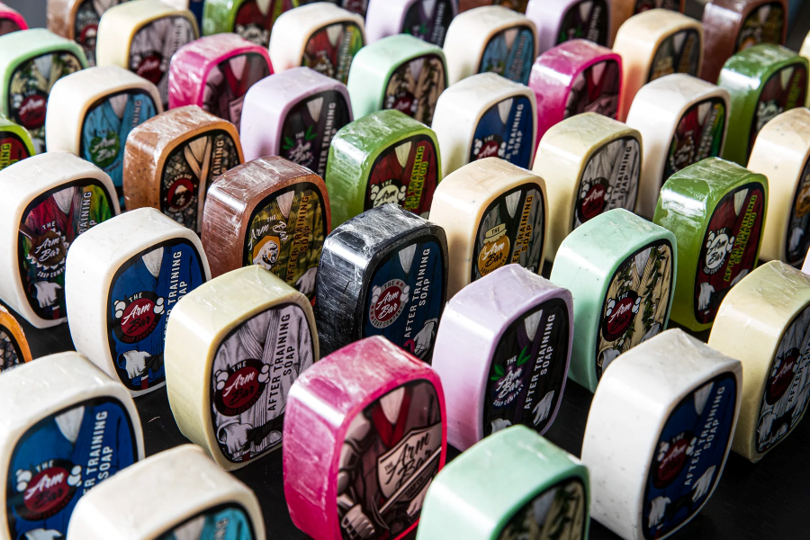This month’s post comes from a doc whose career has been deeply involved with competitive wrestling. Dr. BJ Anderson serves as a team physician for a collegiate wrestling team as well as the medical advisor for MN/USA Wrestling and a past member of the National Federation of State High School Associations (NFHS) Sports Medicine Advisory Committee. Not only that, but he has written numerous guidelines in peer-reviewed journals on this topic and has led and published the only prospective study to date on a personal hygiene intervention in wrestlers.1 Here are the quick bites, but read on for the wise and knowledgeable words of Dr. Anderson.
- The global market for antimicrobial additives is huge and very enticing to combat sports athletes.
- So far, there is no evidence these products will significantly reduce one’s risk of skin infections compared to the basics.
- You don’t need to break the bank to stay healthy, wash yourself and your stuff after each gym session.
Overview
Kenshield
Antimicrobial Clothing
Antimicrobial Soaps/Wipes
Antimicrobial Coatings
Conclusion
- Have the athletes shower immediately after each practice/event.
- Daily skin checks. The most important thing you can do to reduce skin infections!
- Wash workout gear and towels after each practice/event.
- Work with one Health Care Provider. Continuity with the same HCP will reduce skin infections on your team.
Questions about a skin condition and don’t have access to a doc? Download the app for iPhone or Android…MATDOC. You can send photos and receive an evaluation within 24 hrs. Questions for Dr. Anderson? Email at: info@thematdoc.com
References
- Anderson BJ. Effectiveness of body wipes as an adjunct to reducing skin infections in high school wrestlers. Clin J Sport Med. 2012 Sep;22(5):424-9. doi: 10.1097/JSM.0b013e3182592439. PMID: 22695403.
- Hand JW, Wroble RR. Prevention of tinea corporis in collegiate wrestlers. J Athl Train. 1999 Oct;34(4):350-2. PMID: 16558587.
- Kermani F, Moosazadeh M, Hosseini SA, Bandalizadeh Z, Barzegari S, Shokohi T. Tinea Gladiatorum and Dermatophyte Contamination Among Wrestlers and in Wrestling Halls: A Systematic Review and Meta-analysis. Curr Microbiol. 2020 Apr;77(4):602-611. doi: 10.1007/s00284-019-01816-3. Epub 2019 Nov 26. PMID: 31773190.
- Peterson AR, Nash E, Anderson BJ. Infectious Disease in Contact Sports. Sports Health. 2019 Jan/Feb;11(1):47-58. doi: 10.1177/1941738118789954. Epub 2018 Aug 14. PMID: 30106670.
- Henley DV, Lipson N, Korach KS, Bloch CA. Prepubertal gynecomastia linked to lavender and tea tree oils. N Engl J Med. 2007 Feb 1;356(5):479-85. doi: 10.1056/NEJMoa064725. PMID: 17267908.
- Figures were created Dr. Walls, photos taken from publicly accessible web stores and content for example purposes and not as advertisement or endorsement.









Recent Comments